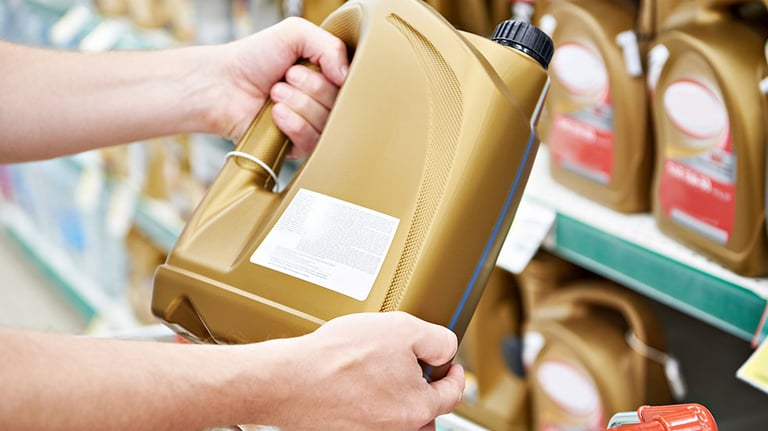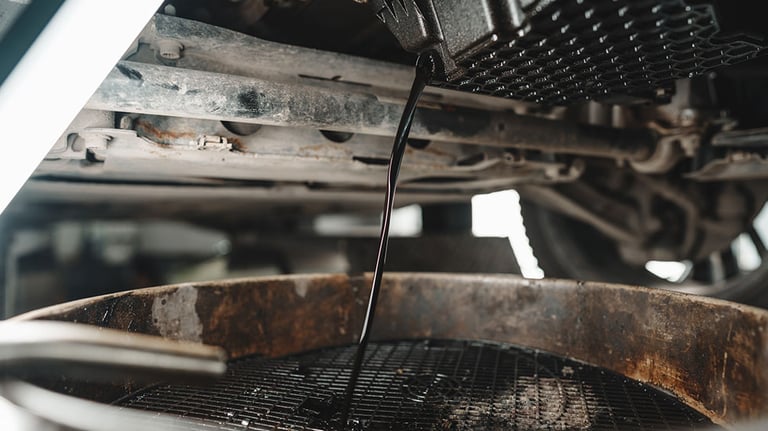How to Perform Your Own Oil Change
Learn how to change oil, plus other car maintenance tips


To save money on car maintenance, learning how to do an oil change yourself is a great way to save hundreds of dollars a year. The oil in your engine is its life blood, lubricating parts to keep them moving smoothly and dissipating the intense heat generated as your engine runs, so when it comes to how often you should change your oil, it is usually every 5,000 – 7,500 miles. Keeping your oil clean and fresh is one of the best ways you can preserve your vehicle's overall health, maintaining performance and allowing your car's engine to travel hundreds of thousands of miles.
So, “How long does an oil change take?” Usually as you consider whether to do it yourself and the answer is usually under an hour, if you have the right tools and supplies. In this article, we'll walk you through, step-by-step, how to do an oil change. We will also highlight some things to look out for and keep in mind as you work. But before you get started, you will need to gather some essential supplies.

Before you start: What you'll need
- Oil & Filter: Not only will you need the proper oil blend, but you will also need to buy the right amount as well as a new oil filter. Consult your owner's manual for recommended oil, amount your engine needs, and filter specifications.
- Wrench: You will need a wrench, whether crescent or socket, you will need a wrench to loosen and replace the oil drain plug.
- Oil Filter Wrench: A specialized oil filter wrench will let you break loose and unscrew the old oil filter. These can be found at your local auto parts store or in the automotive section of big box retailers.
- Stands or Wheel Ramps: You will probably need to lift your car to access the oil pan. You should NEVER get under a vehicle only supported by a jack. Before getting under your car to work, make sure it is resting on something solid like jack stands or wheel ramps.
- Funnel: To prevent pouring oil onto your engine, which can smell really bad once the car is running, using an oil funnel will ensure every drop makes it where it's supposed to go.Oil Catch Pan: An oil catch pan captures old oil so that you can responsibly recycle it. It can also be used to store the old, drippy oil filter once you've removed it.
- Shop Rags: Even the best technician needs rags around to spot clean messes and remove grime.
- Newspaper: Spread underneath the oil catch pan, newspaper will help soak up any stray drips or spills of oil, preventing it from soaking into anything important.

Now it’s time to start your oil change. You'll need to find a flat area on solid ground where you can park and work.
- Position the Vehicle: Park your car where you plan to work and let it run for at least a minute to warm the oil. This will help it drain from the oil pan once you're ready.
- Raise Vehicle and Hood: Lift the vehicle so it is resting on jack stands or wheel ramps and you can access the oil pan underneath. YOU SHOULD NEVER get under a vehicle only supported by a jack. Pop the hood so you can access the oil cap and dipstick.
- Place Newspaper and Oil Catch Pan: Spread newspaper on the ground under the oil drain plug. Place your oil catch pan on top of the newspaper so it's ready to catch your oil.
- Loosen Drain Plug: Using your wrench, loosen the plug on the oil pan, but don't remove it completely. Once the plug is finger tight, use your fingers to remove it so the oil falls into the catch pan. Open the oil cap on your engine to increase the flow of oil.
- Remove Old Oil Filter: Use the oil filter wrench to loosen the old oil filter and remove it. Place the old filter in your catch pan to prevent it from leaking onto any surfaces.
- Install New Oil Filter: Unpack and remove the protective film from your new oil filter. Using a finger, dab some old motor oil onto the new filter's gasket until it is completely coated in a thin layer of oil. This helps prevent the gasket from cracking or sticking to your engine block. Screw the new filter into place using your hand. Tighten it fully by hand, not the wrench.
- Replace Drain Plug: With the new filter installed, you can replace the oil drain plug and tighten it fully with the wrench.
- Add New Oil: Add the specified oil to the engine. Once you've finished adding all your oil, replace the oil cap. But don't close your hood and drive off just yet.
- Start the Engine: Start the engine and allow it to run for a minute or two. This will distribute the new oil and get it flowing through your engine.
- Measure Your Oil Level: After the car has run for a few minutes, use your dipstick to measure the oil level. If it still reads too low, add more oil and measure again. Repeat until the dipstick reads full.
Congratulations! You’ve just performed your first oil change service and are well on your way to saving money on oil changes every year.
